IN PICTURES: The story of Bergen's famous Tønnebålet barrel bonfire
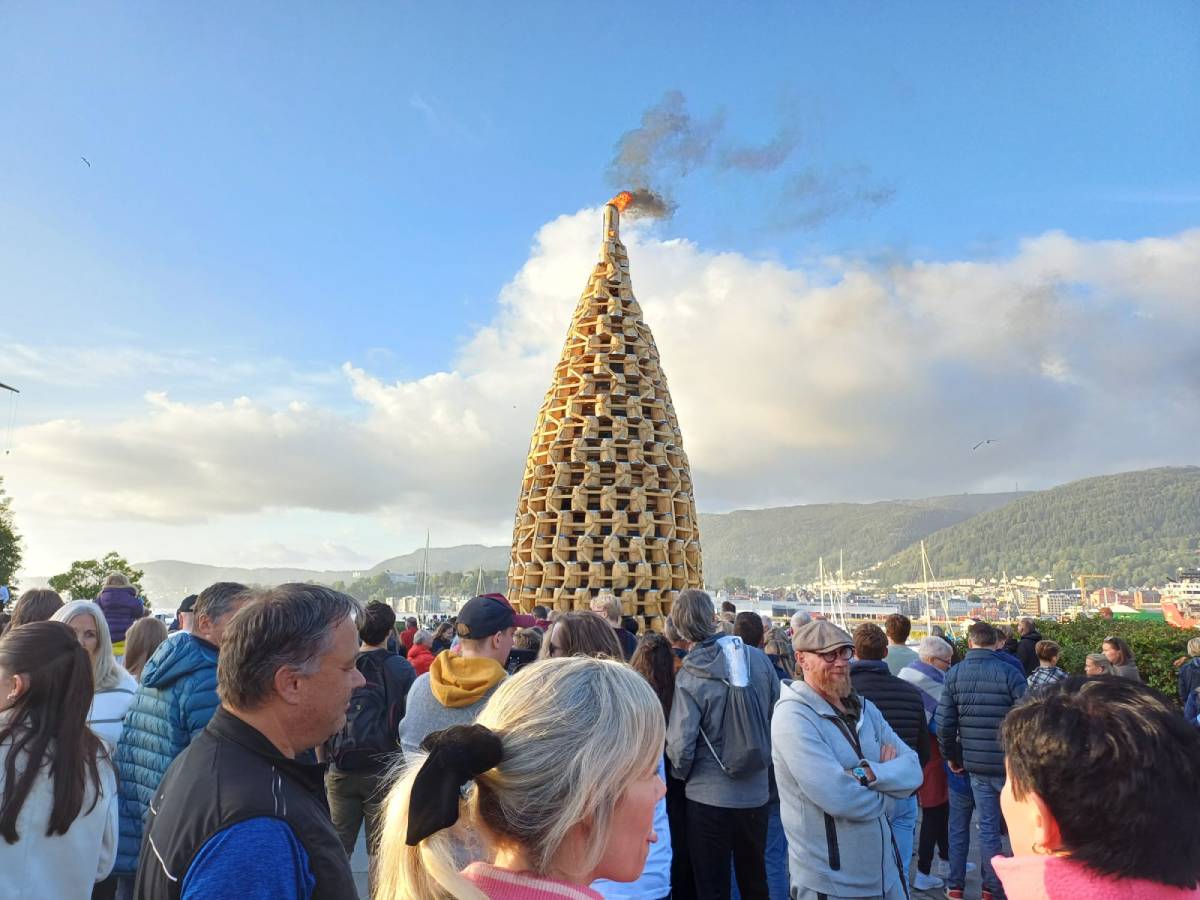
Every year on June 23rd, Laksevåg in Bergen, western Norway, transforms into a lively festival ground for St. Hans, attracting hundreds of visitors with its festive barrel bonfire, one of the largest in the world.
Many Norwegians gather annually on the evening of June 23rd to celebrate Sankthans, also known as Midsummer's Eve, with festive bonfires.
Although the official date for Sankthans is June 24th, the celebrations kick off the night before, bringing communities together in anticipation of the day.
READ MORE: Sankthans: What you should know about Norway's midsummer celebration
The origins of Sankthans can be traced back to the Christianization of Norway when the celebration was designated as a holy day honouring St. John the Baptist's birthday.
Over the centuries, the day's religious significance has faded, but the communal spirit and festive atmosphere remain strong.
Bonfires have always been a central element of the celebration, symbolizing the sun's power during the long summer days and the triumph of light over darkness.
The Tønnebålet barrel bonfire in Bergen, Norway's second-largest city, is among the country's biggest and most famous.
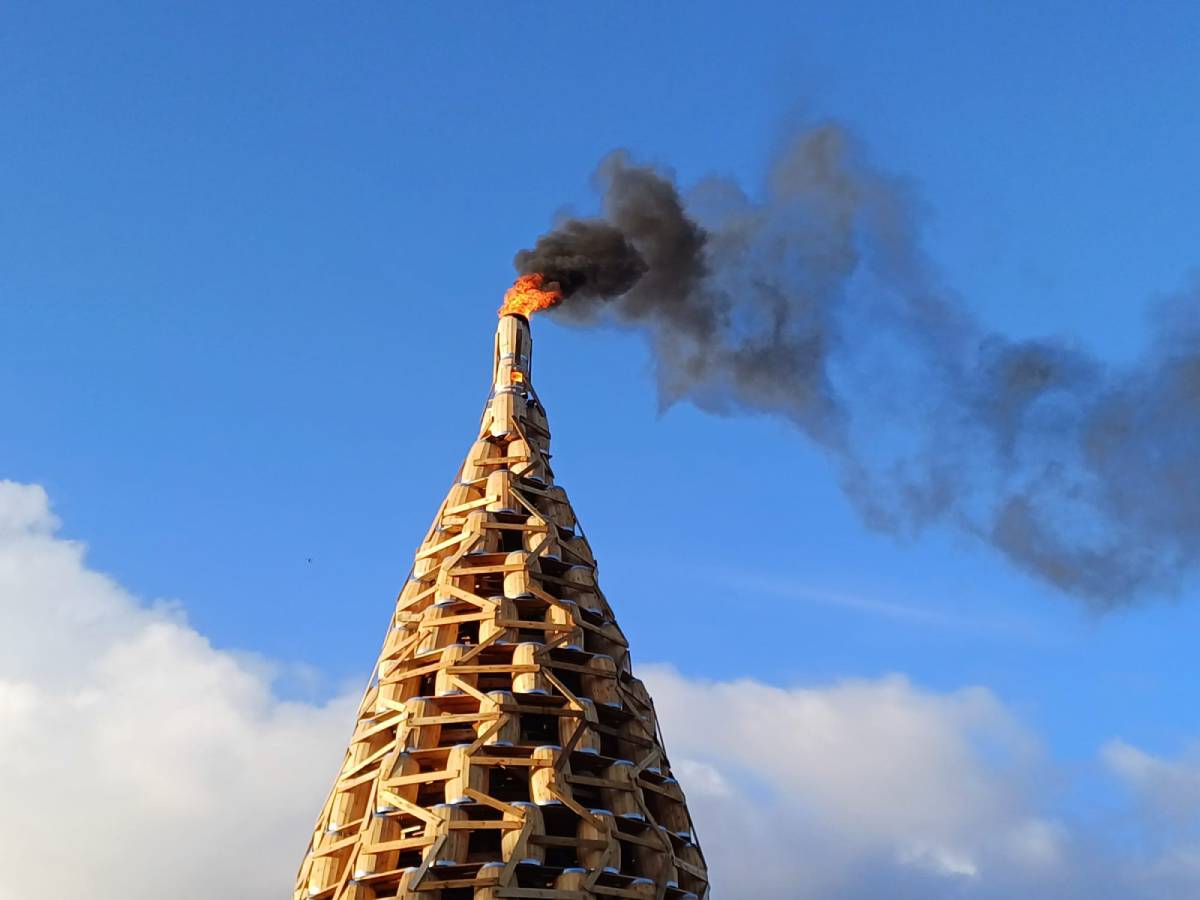
The 2024 Tønnebålet was blessed with beautiful weather, a rare treat in Bergen, often dubbed "Norway's Rain Capital." Photo by: Robin-Ivan Capar / The Local Norway
The Tønnebålet bonfire: A tradition steeped in history
The tradition of building fires in the area dates back to the 18th century.
The barrel bonfires' origins remain uncertain, with some attributing them to Laksevåg's archery brigade, Laksevågs Bueskyttere.
On the other hand, historical accounts suggest that bonfires in Nordre Vågen were being constructed by another local group, called Laxevaags Bataljon, as early as 1902.
The rivalry between the two groups was fierce. Both groups competed to build the biggest bonfire and amass the most barrels, often resorting to "collecting" barrels from around the fjord and occasionally stealing from each other.
The last bonfire in Nordre Vågen was built around 1935 before fires were banned in the area. Laxevaags Bataljon disbanded after the 1938 season, and the tradition was interrupted by World War II.
The archery brigade was left to uphold the tradition alone, and they have done so against increasingly challenging odds. In the early 20th century, multiple small bonfires dotted the area.
Today, the tradition has been consolidated into one large bonfire, sometimes accompanied by a smaller one (as was the case in 2023 and 2024).
A significant challenge in recent years has been the dwindling availability of barrels, which are no longer as easily obtainable as they were over a century ago. To keep the tradition alive, the archery brigades now often have to purchase barrels.
Tønnebålet på Laksevåg pic.twitter.com/moDVtJLujg
— Arild Traa (@attraa) June 23, 2016
Ofrer kveldens VM kamper til fordel for tønnebålet i Bergen by! pic.twitter.com/RLufB2QtZs
— Radney Thomsen 🇺🇦🕊 (@RadneyThomsen) June 23, 2014
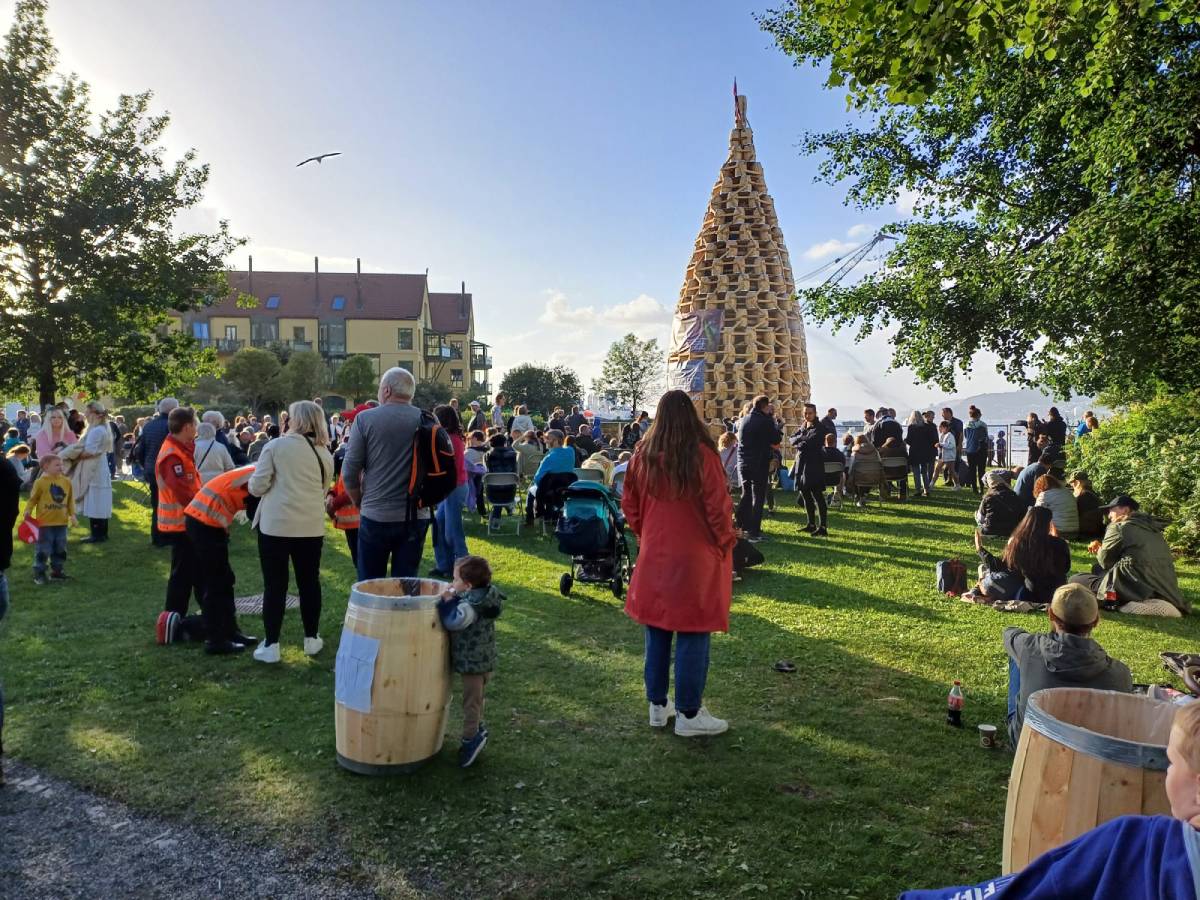
The Tønnebålet is a family-friendly event that brings the local community together, attracting hundreds of visitors. Photo by: Robin-Ivan Capar / The Local Norway
The 2024 Tønnebålet celebration
In 2024, the June 23rd bonfire attracted a large crowd of hundreds of visitors. Tickets were priced at 220 kroner.
Hundreds of boats gathered at sea for the event, with people eager to witness the magnificent blaze from the water.
The bonfire was lit at 9 pm, to the cheers of the crowds gathered to witness the occasion. The bonfire was watered throughout the evening, ensuring a controlled fire.
Attendees enjoyed live music, a variety of food and drink options, and an unusually sunny day for Bergen, enhancing the festive mood.
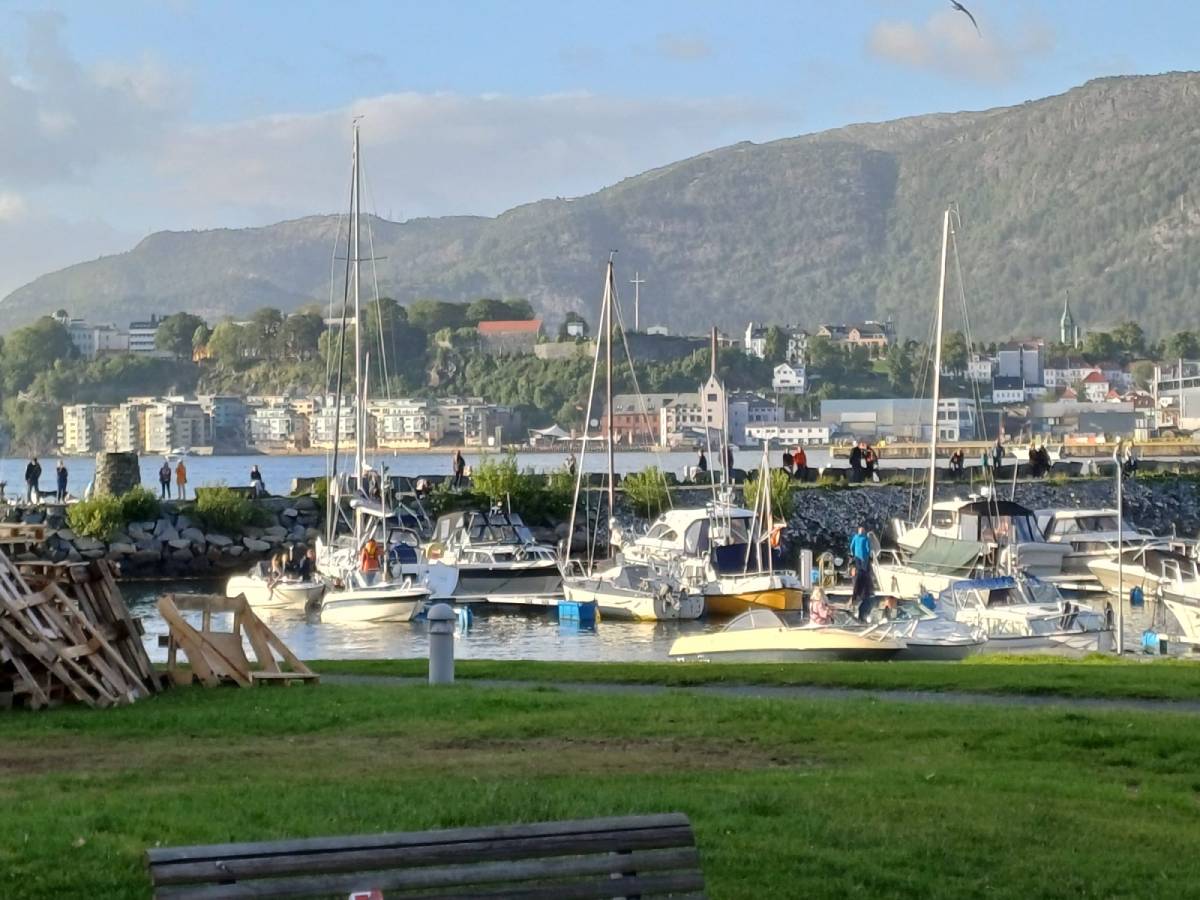
Dozens of boats gathered at sea, with people eager to see the bonfire from the water. Photo by: Robin-Ivan Capar / The Local Norway
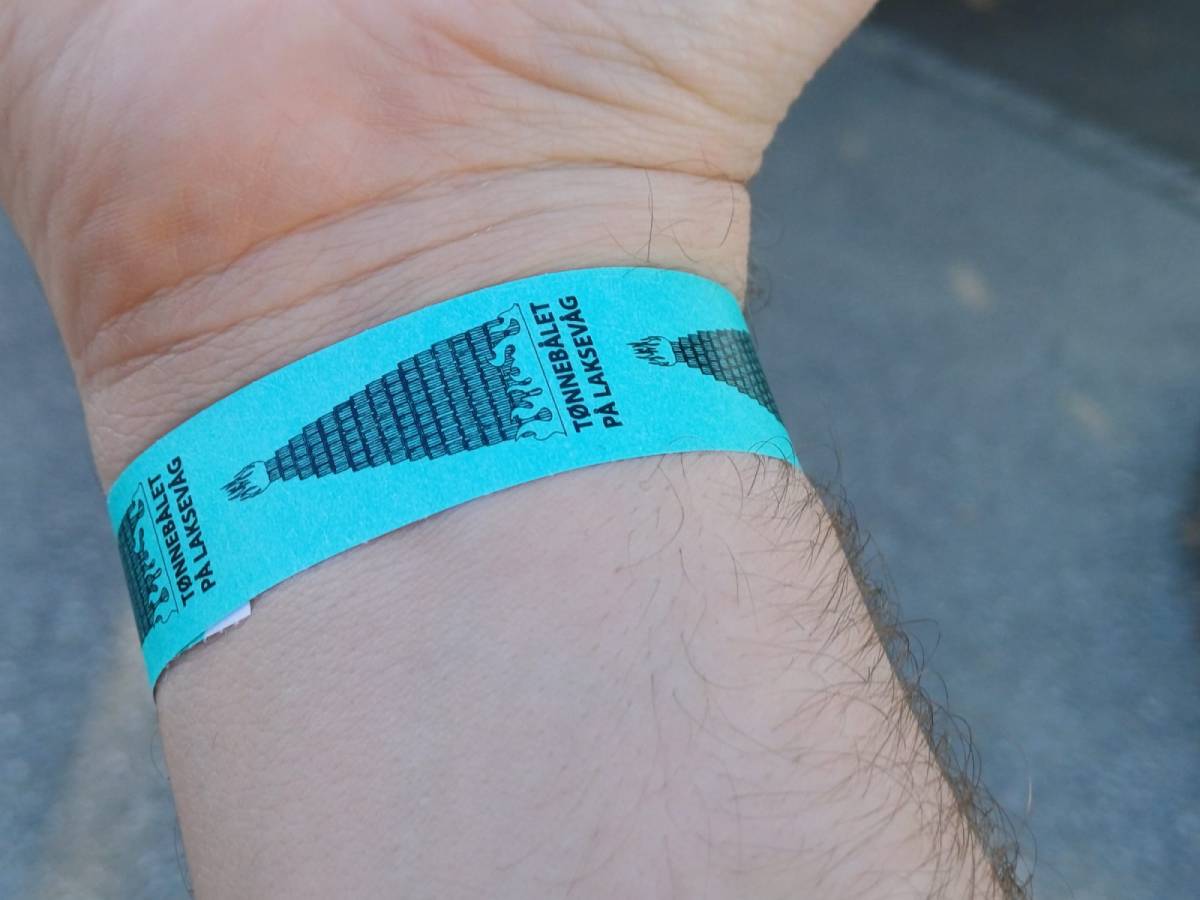 In 2024, event passes were priced at 220 kroner. Photo by: Robin-Ivan Capar / The Local Norway
In 2024, event passes were priced at 220 kroner. Photo by: Robin-Ivan Capar / The Local Norway
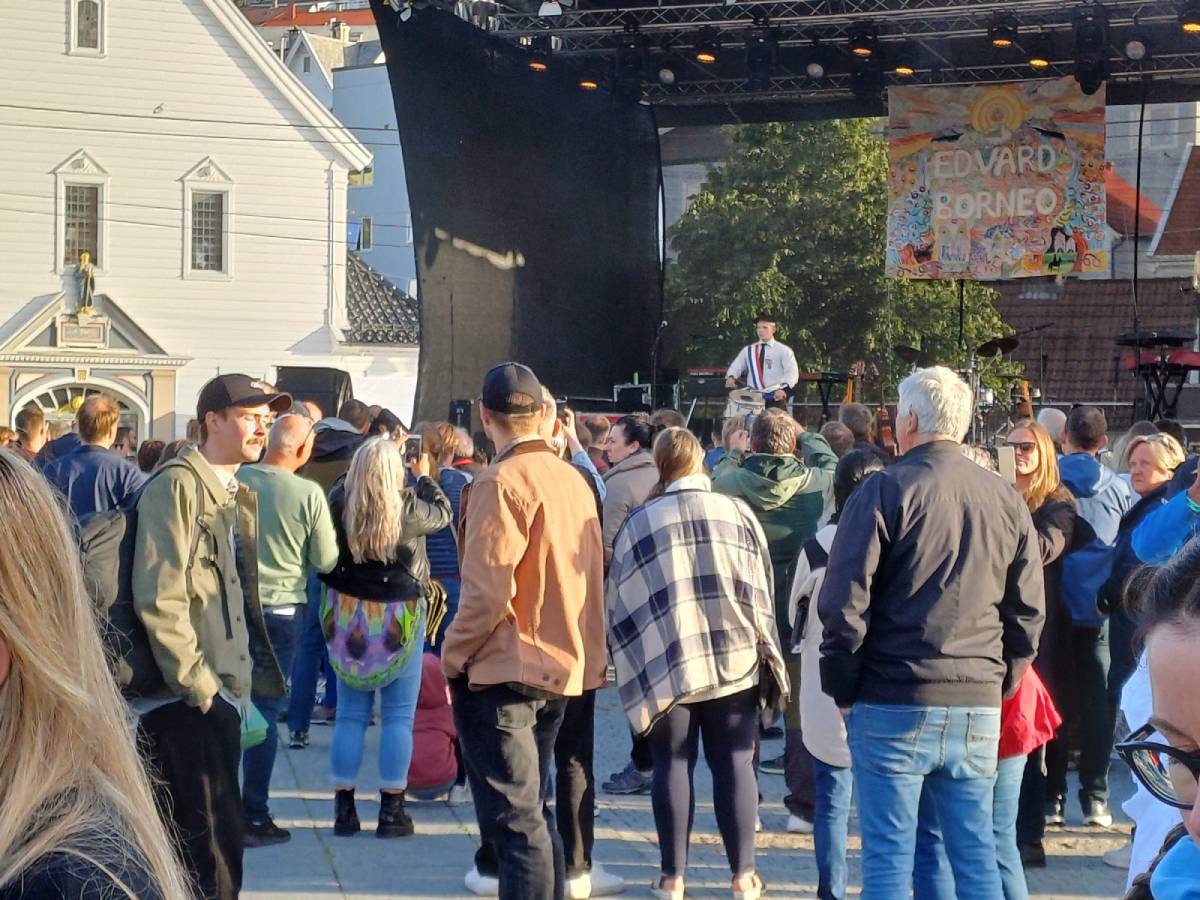 Tønnebålet attendees are usually able to enjoy live music. Photo by: Robin-Ivan Capar / The Local Norway
Tønnebålet attendees are usually able to enjoy live music. Photo by: Robin-Ivan Capar / The Local Norway
Comments
See Also
Many Norwegians gather annually on the evening of June 23rd to celebrate Sankthans, also known as Midsummer's Eve, with festive bonfires.
Although the official date for Sankthans is June 24th, the celebrations kick off the night before, bringing communities together in anticipation of the day.
READ MORE: Sankthans: What you should know about Norway's midsummer celebration
The origins of Sankthans can be traced back to the Christianization of Norway when the celebration was designated as a holy day honouring St. John the Baptist's birthday.
Over the centuries, the day's religious significance has faded, but the communal spirit and festive atmosphere remain strong.
Bonfires have always been a central element of the celebration, symbolizing the sun's power during the long summer days and the triumph of light over darkness.
The Tønnebålet barrel bonfire in Bergen, Norway's second-largest city, is among the country's biggest and most famous.

The Tønnebålet bonfire: A tradition steeped in history
The tradition of building fires in the area dates back to the 18th century.
The barrel bonfires' origins remain uncertain, with some attributing them to Laksevåg's archery brigade, Laksevågs Bueskyttere.
On the other hand, historical accounts suggest that bonfires in Nordre Vågen were being constructed by another local group, called Laxevaags Bataljon, as early as 1902.
The rivalry between the two groups was fierce. Both groups competed to build the biggest bonfire and amass the most barrels, often resorting to "collecting" barrels from around the fjord and occasionally stealing from each other.
The last bonfire in Nordre Vågen was built around 1935 before fires were banned in the area. Laxevaags Bataljon disbanded after the 1938 season, and the tradition was interrupted by World War II.
The archery brigade was left to uphold the tradition alone, and they have done so against increasingly challenging odds. In the early 20th century, multiple small bonfires dotted the area.
Today, the tradition has been consolidated into one large bonfire, sometimes accompanied by a smaller one (as was the case in 2023 and 2024).
A significant challenge in recent years has been the dwindling availability of barrels, which are no longer as easily obtainable as they were over a century ago. To keep the tradition alive, the archery brigades now often have to purchase barrels.
Tønnebålet på Laksevåg pic.twitter.com/moDVtJLujg
— Arild Traa (@attraa) June 23, 2016
Ofrer kveldens VM kamper til fordel for tønnebålet i Bergen by! pic.twitter.com/RLufB2QtZs
— Radney Thomsen 🇺🇦🕊 (@RadneyThomsen) June 23, 2014

The 2024 Tønnebålet celebration
In 2024, the June 23rd bonfire attracted a large crowd of hundreds of visitors. Tickets were priced at 220 kroner.
Hundreds of boats gathered at sea for the event, with people eager to witness the magnificent blaze from the water.
The bonfire was lit at 9 pm, to the cheers of the crowds gathered to witness the occasion. The bonfire was watered throughout the evening, ensuring a controlled fire.
Attendees enjoyed live music, a variety of food and drink options, and an unusually sunny day for Bergen, enhancing the festive mood.



Join the conversation in our comments section below. Share your own views and experience and if you have a question or suggestion for our journalists then email us at [email protected].
Please keep comments civil, constructive and on topic – and make sure to read our terms of use before getting involved.
Please log in here to leave a comment.